Capsizing a Boat or Falling Overboard: What to Do?
Capsizing and falling overboard both result in boaters ending up in the water. US Coast Guard statistics indicate that 75 percent of fatal boating incident victims drowned, so it’s important not to underestimate the risks associated with falling overboard.
Knowing what to do if your boat capsizes or a passenger unexpectedly falls overboard can save lives.
What is capsizing?
Capsizing occurs when a boat overturns, either partially (on its side) or completely (upside down). Smaller watercraft like canoes and sailboats are more likely to capsize than larger vessels.
When a boat capsizes, everyone on board ends up in the water. There is no-one to throw PFDs to a person in distress, and this a perfect example of why the law stipulates that all boaters, including children, must wear a properly fitted life jacket at all times while boating. Most drowning victims (85%) were not wearing a life jacket at the time of their deaths.
What causes a boat to capsize?
Common causes of capsizing include:
- Waves
- Leaks
- Turning suddenly without slowing down
- Overloading your boat, either with too many people or excessive equipment (Always check your boat capacity plate to confirm you have not exceeded the recommended load.)
- Distributing weight unevenly in the boat (passengers moving around, etc.)
- Adverse weather conditions like high winds and rough water
- Boating under the influence (check the laws in New York, Florida and California before heading out)
How to prevent capsizing and falls overboard
Fortunately, there are a few things every boater can do to minimize the risk of capsizing or falling overboard:
- Avoid standing up or moving around while the boat is underway.
- If you have to move while your boat is underway, keep low, stay centered, and always maintain three points of contact.
- Never attach the anchor line to the stern. Instead, tie the anchor line to the bow.
- Navigate corners at a safe speed and angle.
- Look out for waves and the wakes of other boats. When possible, approach them head-on from the bow.
- If you are obliged to navigate in bad weather, reduce your speed. Always avoid going out on the water if there is a risk of high winds or a storm.
What to do if your boat capsizes
There are few things you can do if your boat capsizes. If possible, upright the boat, bail out the water, and climb back in the boat.
If you can’t upright your boat:
- Do a head count and verify that everyone is wearing a life jacket. Remember, wearing a life jacket is the law.
- Anyone not wearing a life jacket should use any available objects like ice chests or empty soda bottles to help them stay afloat.
- Stay with your boat. If your boat is still floating, it is safer to stay with the boat than to try to swim ashore. The capsized boat will give you something to hold on to, so you can avoid drowning while you wait for help. It is also easier for rescuers to see an entire boat than a lone individual in the water.
- Be prepared for the risks associated with cold water immersion. Hypothermia can set in very quickly, even on warm days, and boaters should be aware of the steps to take to conserve body heat in the event that you fall overboard. Again, wearing the right size and type of PFD will increase your chances of survival by preserving your body heat and keeping you afloat even if you lose consciousness.
All boaters have a responsibility to help one another. Be sure to indicate that you are in distress so that another boater may offer assistance or contact the appropriate rescue personnel.
What to do if a person falls overboard
Follow these steps if a passenger on your boat falls overboard:
- Stay calm.
- Slow down and stop the boat.
- Throw something buoyant to the person overboard. Even if they are wearing a life jacket, this object can help them stay afloat and make it easy to see them (or mark their location if they go under).
- If a person is separated from the boat in a fast-moving river, they should float on their back with their feet pointed downstream.
- Assign someone who is still on board to keep the person in the water in sight at all times by continually pointing to their location.
- If possible, approach the person very carefully, keeping them on the operator side of the boat.
- Throw them a buoyant line or a buoy attached to your boat, and pull them back to the boat as quickly and carefully as possible. In most cases, the person will climb back on board at the stern, in which case you must turn off your engine.
Get certified in boater safety with Drive A Boat USA
Be prepared to deal with boating emergencies like capsizing and falling overboard by taking an approved boater safety course. One you’ve passed your exam, you will be the proud holder of a state-approved boating license.
Earn a boating card that proves you know what you’re doing! Get your licence online or replace a lost or damaged card from Drive a Boat USA.

